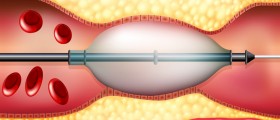
A friend, who is very sure that she does not want any more kids, told me about Adiana. I immediately knew I had to share what I learned with you, because this is a much lesser known method that sounds promising for people that want to prevent pregnancy permanently, without hormones and without surgical procedures. Frankly, Adiana sounds liberating and appealing for those who need it. Adiana is actually a very small, sponge-type insert. It is about the size of a grain of rice, and during the placement procedure, two of these are inserted into the openings of both fallopian tubes. This procedure can be carried out under a local anesthetic. After the insertion, it will take three months for the body to naturally grow tissue around the Adiana inserts. Once this process is complete, the fallopian tubes will be blocked and it will no longer be possible for eggs to pass into the uterus.
Before you can rely on Adiana as a birth control method, there will be a check up to make sure the tubes are in fact blocked. This is still a relatively new contraception method. The figures about its safety rely on three year clinical data. There is about a two percent chance of pregnancy after having Adiana inserted, manufacturers say, including ectopic pregnancy.












_f_280x120.jpg)




Your thoughts on this
Loading...